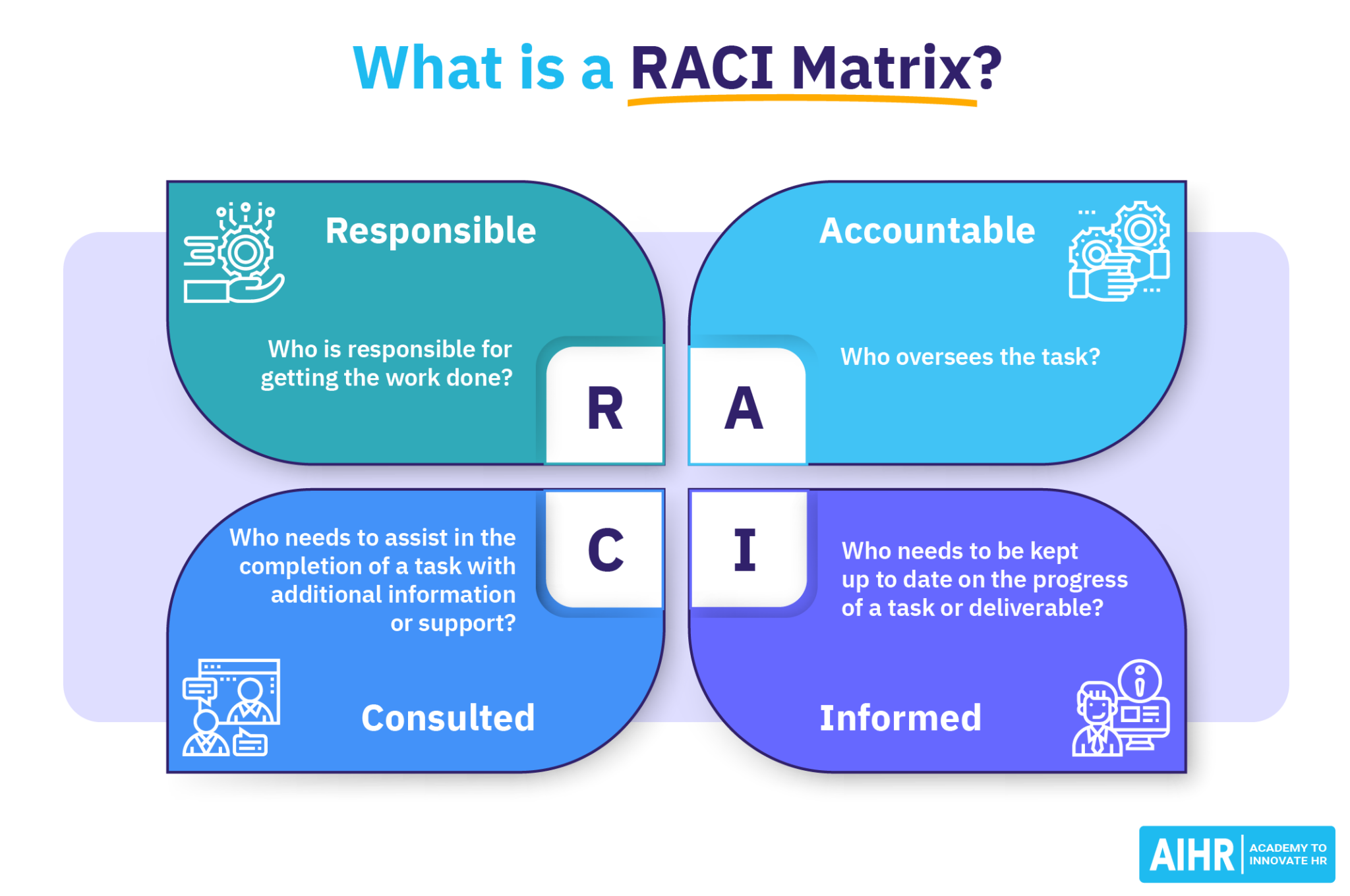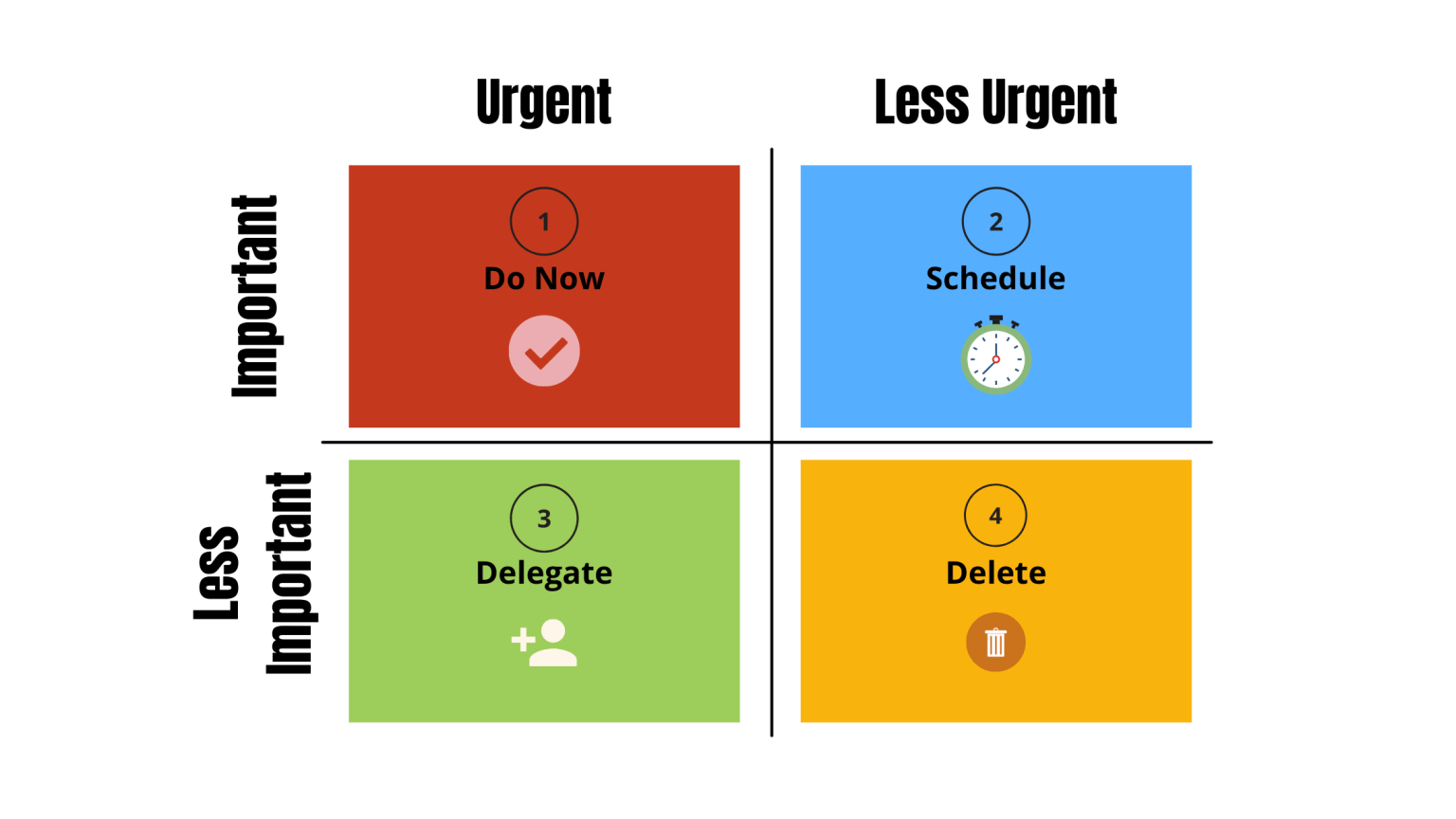Last Updated: March 25, 2025
In the fast-paced world of startups, making informed decisions quickly can mean the difference between success and failure. Frameworks for Decision-Making in a Startup are crucial tools that can help startup founders and leaders navigate the constant challenges that require swift and effective decision-making.
As a result, you can minimize risks, avoid common pitfalls, and ensure operational efficiency. But how can you ensure that you’re making the right choices under pressure?
A Decision-Making framework guides startups through different product development, growth, and management stages. These structured methodologies and models, such as the 10-10-10 Rule, RAPID Decision-Making Model, and various startup frameworks, help tackle challenges and optimize performance in developing business environments.
This article will explore various decision-making frameworks tailored specifically for startup environments. We’ll dive into specific processes, introduce powerful models, and provide real-world examples to help you navigate the complex landscape of startup leadership.
What is a Decision-Making Process in a Startup?
Before we dive into specific frameworks, it’s important to understand the fundamental steps involved in making smart decisions. A structured approach to decision-making can significantly improve consistency and effectiveness, especially in high-pressure startup environments.
The decision-making process typically involves seven key steps:
-
- Identification of the problem or opportunity
- Gathering relevant information
- Identifying options
- Weighing the evidence
- Choosing among alternatives
- Taking action
- Reviewing the decision and its consequences
By following this process, you create a systematic approach to decision-making that can be applied across various scenarios in your startup.
Responsibility assignment matrix
Additionally, utilizing a responsibility assignment matrix (RAM) – also known as the RACI chart, can clarify roles and responsibilities, ensure accountability, and facilitate a deeper understanding of who is responsible for specific tasks or decisions, thus avoiding confusion and ensuring alignment among team members. This is especially important when more than one person is involved in the decision-making process.

The steps of a Decision-Making Process:
-
- Identification of the problem or opportunity: Clearly define the issue at hand or the potential opportunity you’re facing. This step is vital as it sets the stage for the entire decision-making framework.
- Gathering relevant information: Collect data and insights related to the problem or opportunity. This may involve market research, competitor analysis, internal data from your startup, and understanding the development process to ensure all aspects are considered. Utilizing a business model canvas can be particularly effective for collecting and visualizing essential components of your company’s offerings.
- Identifying options: Brainstorm and list all possible solutions or courses of action. Don’t limit yourself at this stage – consider both conventional and unconventional options.
- Weighing the evidence: Evaluate the pros and cons of each alternative based on the information you’ve gathered. Consider factors such as feasibility, potential impact, and alignment with your startup’s goals.
- Choosing among alternatives: Select the best option based on your analysis. This is where your judgment as a leader comes into play, balancing data-driven insights with your intuition and experience.
- Taking action: Implement your chosen solution. Develop a clear plan of action and communicate it effectively to your team.
- Reviewing the decision and its consequences: After implementation, assess the outcomes of your decision. This step is crucial for learning and improving your decision-making process over time.
Now that we’ve outlined the basic process, let’s explore some powerful decision-making frameworks that can supercharge your ability to make effective choices in your startup.

Choosing the Right Decision-Making Framework
The RAPID Decision-Making Model
The RAPID model, developed by Bain & Company, is particularly well-suited for startups due to its emphasis on clear roles and swift action. RAPID stands for Recommend, Agree, Perform, Input, and Decide.
Here’s how the RAPID Decision-Making Model works:
-
- Recommend: One person or group is responsible for making a recommendation for addressing the issue at hand. Identifying roles like ‘development lead’ within a RACI chart can enhance team organization and ensure streamlined workflows.
- Agree: Key stakeholders must agree with the recommendation. They have veto power but should use it judiciously.
- Perform: These are the individuals who will carry out the decision once it’s made.
- Input: People in this role provide relevant information and analysis to support the decision-making process.
- Decide: The final decision-maker has the ultimate responsibility for approving or rejecting the recommendation.
How to implement the RAPID Decision-Making Model in a startup setting?
-
- Identify key decisions your startup needs to make regularly.
- Assign roles (R, A, P, I, D) to team members for each type of decision.
- Communicate the framework to your team, ensuring everyone understands their responsibilities.
- Use the framework consistently for decision-making, adjusting roles as needed based on the specific situation.
Example: Let’s say your startup is deciding whether to pivot its product strategy. The product manager (R) would make a recommendation based on market research and user feedback. The CTO and CMO (A) would need to agree, considering technical feasibility and marketing implications. The development and marketing teams (P) would implement the decision. Various team members and possibly customers (I) would provide input throughout the process. As the CEO (D), you would make the final decision based on the recommendation and additional input.
Six Decision-Making Frameworks from First Round
First Round, a venture capital firm known for its early investments in companies like Uber and Square, has compiled six powerful decision-making frameworks particularly relevant for startups.
Selecting the right startup framework based on specific business objectives is very important for enhancing operations and achieving growth.
Let’s explore each one in detail:
a) The Eisenhower Matrix
Join the tribe
Receive a free white paper on “Founder Coaching” and its benefits by signing up to our mailing list. We provide practical advice and helpful reflections to reach your full potential in work and life.

Named after President Dwight D. Eisenhower, this framework helps prioritize decisions based on their urgency and importance. It divides tasks into four areas:
-
- Urgent and Important: Do these tasks immediately.
- Important but Not Urgent: Schedule these for later.
- Urgent but Not Important: Delegate these tasks if possible.
- Neither Urgent nor Important: Eliminate these tasks.
The leadership team can use the Eisenhower Matrix to prioritize decisions and ensure that urgent and important tasks are addressed promptly.
For startup founders, this framework is invaluable for managing the constant inflow of tasks. It helps you focus on what truly matters for your business’s growth and success.
b) The Regret Minimization Framework
Popularized by Amazon’s Jeff Bezos, this framework involves projecting yourself into the future and looking back on the decision you’re about to make. Ask yourself: “In X years, will I regret not doing this?”
This approach is particularly useful for big, long-term decisions that might feel risky at the moment but could lead to significant opportunities. It helps founders overcome short-term thinking and fear of failure, encouraging bold moves that align with their long-term vision. Additionally, it aids in navigating tough calls by considering long-term implications and overcoming short-term thinking.
c) The Asian Efficiency OmniFocus Workflow
This framework, inspired by productivity systems like Getting Things Done (GTD), breaks down complex decisions into actionable steps. It involves:
-
- Capturing all tasks and ideas
- Processing them into specific actions
- Organizing these actions into projects and contexts
- Reviewing regularly
- Engaging with the tasks
This framework can help manage decision overload by turning big choices into manageable action items.
Additionally, effective project management methodologies can support this framework by organizing and structuring tasks and actions.
d) Jeff Bezos’ Type 1 and Type 2 Decisions
Bezos categorizes decisions into two types:
-
- Type 1: Big, significant, and irreversible (or nearly irreversible) decisions
- Type 2: Reversible decisions that can be changed relatively easily
The key is to treat these differently. Type 1 decisions require careful deliberation and consensus-building. Type 2 decisions should be made quickly, often by individuals or small groups.
This framework helps startup founders understand when to move fast and when to slow down, balancing the need for speed with the importance of careful consideration for major decisions.
e) The 10-10-10 Rule
Developed by Suzy Welch, this rule involves considering the consequences of your decision across three different time frames:
-
- How will you feel about it 10 minutes from now?
- How about 10 months from now?
- And how about 10 years from now?
This framework is particularly useful for startup founders when making decisions that have both short-term and long-term implications. It helps balance immediate needs with a long-term strategy.
f) The 5 Whys
Originally developed by Sakichi Toyoda for Toyota, this technique involves repeatedly asking “Why?” (typically five times) to get to the root cause of a problem or decision.
For example:
-
- Why is user engagement dropping? Because users are not returning after their first visit.
- Why are users not returning? Because they find the onboarding process confusing.
- Why is the onboarding process confusing? Because it has too many steps.
- Why does it have too many steps? Because we’ve added features without streamlining the process.
- Why haven’t we streamlined the process? Because we haven’t prioritized user experience in our development cycle. Aha!
This framework helps dig deeper into issues, ensuring that they’re addressing root causes rather than symptoms when making decisions.
Choosing the Right Framework
The key to leveraging these frameworks effectively is understanding when to use each one. For day-to-day prioritization, the Eisenhower Matrix can be invaluable. When facing a major strategic decision, the Regret Minimization Framework or the 10-10-10 Rule might be more appropriate.
When selecting a decision-making framework, it is crucial to consider customer acquisition strategies, as they directly impact startup growth and success.
For complex problems that require a deep understanding, the 5 Whys can help uncover underlying issues. When dealing with a mix of big and small decisions, Bezos’ Type 1 and Type 2 frameworks can help allocate the right resources and time to each.
These frameworks are tools to aid your decision-making, not replace your judgment. As a startup founder, you’ll often need to combine elements from different frameworks and adapt them to your specific situation.
Example: Let’s say you’re deciding whether to pursue a new product feature that some key customers have requested, but which would require significant development resources.
You might start with the Eisenhower Matrix to determine if this decision is truly urgent and important. Then, apply the 10-10-10 Rule to consider the short-term costs versus the long-term benefits. You could use the 5 Whys to dig into why customers are requesting this feature, ensuring you’re solving the right problem. Finally, you might use the Regret Minimization Framework to imagine how you’d feel in a few years if you didn’t pursue this opportunity.
By combining these frameworks, you can approach the decision from multiple angles, leading to a more robust and well-considered choice.
Implementing Decision-Making Frameworks

Now that we’ve explored some powerful frameworks, let’s discuss how to effectively implement them in your startup:
-
- Identify the decision type and context: Is this a strategic decision, an operational choice, or a people-related issue? Understanding the nature of the decision will help you select the most appropriate framework.
- Select the appropriate framework: Based on the decision type, choose the framework that best fits the situation. Don’t be afraid to combine elements from different frameworks if needed.
- Gather and analyze data: Use your startup’s analytics tools, market research, and team insights to collect relevant information. Remember, the quality of your decision is often directly related to the quality of your data.
- Make the decision: Apply the chosen framework to the information you’ve gathered. Trust the process, but also be open to your intuition as a founder.
- Communicate the decision and rationale: Clearly explain the decision, the reasoning behind it, and the expected outcomes to your team. Transparency builds trust and alignment.
- Review and iterate: After implementing the decision, set up checkpoints to review its effectiveness. Be prepared to adjust the course if needed.
Tips for Effective Decision Making
To further improve your decision-making, consider these additional tips:
Be Data-Driven: Leverage tools like Google Analytics, Mixpanel, or custom dashboards to gather and analyze relevant data. However, remember that data should inform, not dictate, your decisions.
Encourage Collaboration: Create a culture where team members feel comfortable sharing their insights and challenging assumptions. Use tools like Slack, Asana, or Notion to facilitate open communication and collaborative decision-making. If you are interested in how to create a startup culture, you can read our blog on this topic here.
Stay Agile: Be prepared to pivot based on new information or changing market conditions. Regular sprint reviews and retrospectives can help maintain this agility.
Learn from Past Decisions: Conduct post-mortems on significant decisions, whether they led to success or failure. Tools like Confluence or Evernote can help document these learnings for future reference. Additionally, consider maintaining a decision log for important choices, recording the context, reasoning, and outcomes, which can serve as a valuable resource for tracking and improving your decision-making process over time.
Examples of Effective Decision-Making in Startups
Let’s examine two real-world examples of startups that successfully implemented decision-making frameworks:
Case Study 1: Airbnb’s Growth Decision In its early days, Airbnb faced a crucial decision: focus on growth in New York City or expand to new markets. Using a data-driven approach combined with the Regret Minimization Framework, the founders decided to focus intensively on New York.
They gathered data on user behavior, market potential, and competitive landscape. Then, they imagined how they’d feel in five years if they had chosen to dilute their efforts across multiple cities versus dominating in New York.
The decision to focus on New York paid off, allowing Airbnb to perfect its model in a key market before expanding globally. This example illustrates the power of combining data analysis with long-term thinking in decision-making.
Case Study 2: Pivot Slack, now a known communication tool, began as an internal tool for a gaming company. The founders faced a critical decision: continue with their struggling game or pivot to focus on their internal communication tool.
Using elements of the RAPID model and the 10-10-10 Rule, they evaluated their options. The recommendation came from the technical team, who saw the potential in their internal tool. The founders agreed, considering the long-term potential of enterprise communication versus the saturated gaming market.
The decision to pivot was made, and the rest is history. This example shows how combining different decision-making frameworks can lead to transformative choices.
Key Takeaways:
-
- Use collected data to inform decisions, but don’t ignore intuition and experience.
- Consider long-term implications, not just immediate outcomes.
- Be willing to pivot when data and analysis support a change in direction.
- Involve your team in the decision-making process for better buy-in and diverse perspectives.
Conclusion
Effective decision-making is a critical skill for startup founders and leaders. By understanding the decision-making process and leveraging frameworks like RAPID, the Eisenhower Matrix, or the Regret Minimization Framework, you can make more informed and confident choices.
The key to successful decision-making in a startup environment is to balance structure with flexibility. Use these frameworks as tools to guide your thinking, but don’t be afraid to adapt them to your specific needs and situation.
Implementing a systematic approach to decision-making can help you navigate the complex and fast-paced world of startups more effectively. It can lead to better outcomes, faster growth, and ultimately, a higher chance of success for your venture.
From the very beginning of your startup’s journey, instituting accountability systems is crucial. Establishing clear decision-making processes helps avoid chaos and fosters transparency, leading to more effective management as the company grows.
As you apply these frameworks and tips in your startup, you’ll develop your own decision-making style that combines analytical thinking with the agility required in the startup world. Keep learning, stay adaptable, and trust in your ability to make strong decisions that will drive your startup forward.
Our Newsletter
I’d like to invite you to dive deeper into the world of startup leadership and decision-making. If you found this information valuable, there’s plenty more where that came from. Consider subscribing to our newsletter for regular insights, tips, and strategies tailored specifically for startup founders and leaders.
Our Blog Section
For those hungry for more knowledge, our website offers a collection of articles on related topics. From team management to fundraising strategies, we cover a wide range of subjects crucial for startup success. Take some time to explore our other resources and arm yourself with the knowledge you need to thrive.
Contact Us
Lastly, if you’re grappling with decision-making challenges in your startup and need personalized guidance, don’t hesitate to reach out. We are a company dedicated to helping startup founders navigate their journey, and we are here to provide tailored advice and support
Interested in Coaching?
Schedule a Free Call

Understanding the Venture Capital Raising Process: A Step-by-Step Guide for Founders
Raising venture capital is a critical milestone for many startups, providing the necessary fuel for rapid growth and scaling. However, the fundraising process can be complex, filled with unfamiliar terms and intricate mechanics.

Top HR Software Solutions for Startups – Features, Pricing and Comparisons
For startups, managing human resources effectively is crucial for growth and success. As teams expand and operations become more complex, the right HR software can streamline processes, ensure compliance, and foster a positive work environment.

How Startup Equity Works: Key Concepts, Vesting, and Calculation Explained
Startup equity is a fundamental concept for founders and early employees, yet it’s often misunderstood. This guide breaks down the essentials of startup equity, from basic definitions to complex calculations, helping you navigate this crucial aspect of your company’s financial structure.

Join the tribe
Receive a free white paper on what “Founder Coaching” is and its benefits by signing up to our mailing list. We provide practical advice and helpful reflections to reach your full potential in work and life.
Frequently asked questions
Who can benefit from Coaching?
Our coaching is tailored to founders of startup companies who seek to grow their businesses, develop personal leadership skills, and maintain their health under pressure.
How do I join Advance Coaching?
Interested founders can set up a discovery call through our website. The application process includes a brief questionnaire about your startup and goals, followed by a consultation call to ensure our program aligns with your needs.
What results can I expect from coaching?
Coaching addresses the areas of your work / life that you want to improve. Whether that is in specific aspects of leadership skills, having more clarity and confidence in your business positioning and strategy, resolving conflicts with your Co-Founder or experiencing enhanced personal health – coaching will identify and strengthen your unique areas for growth.
What is the cost of Advance Coaching?
Pricing depends on your individual needs. Please book a Discovery call to find out more.



